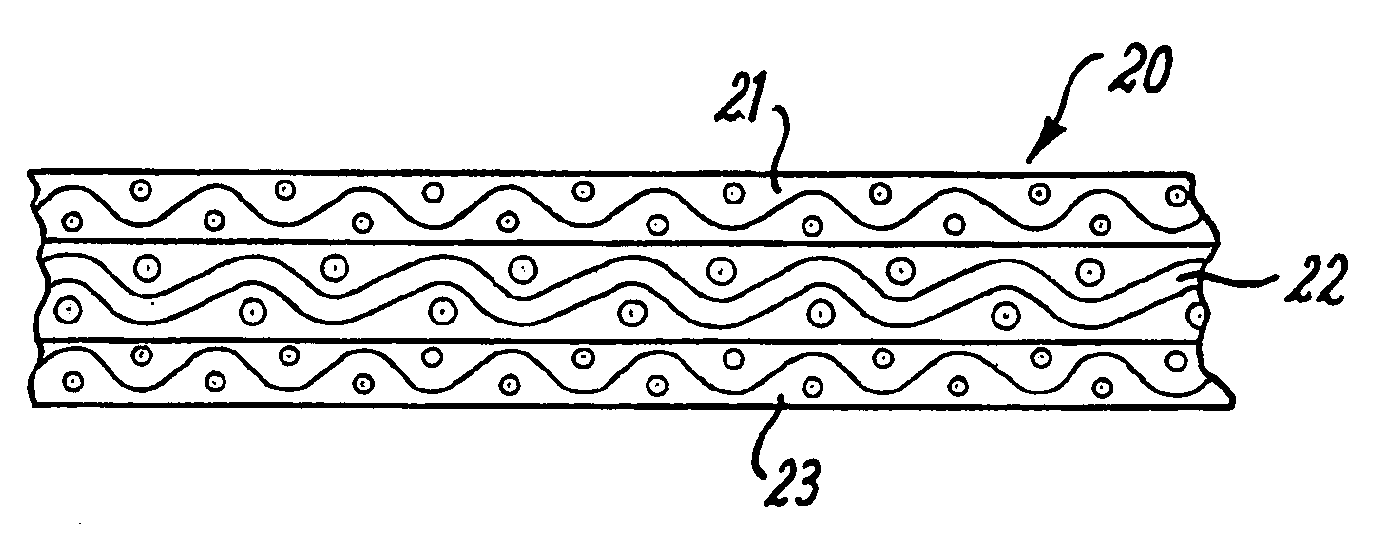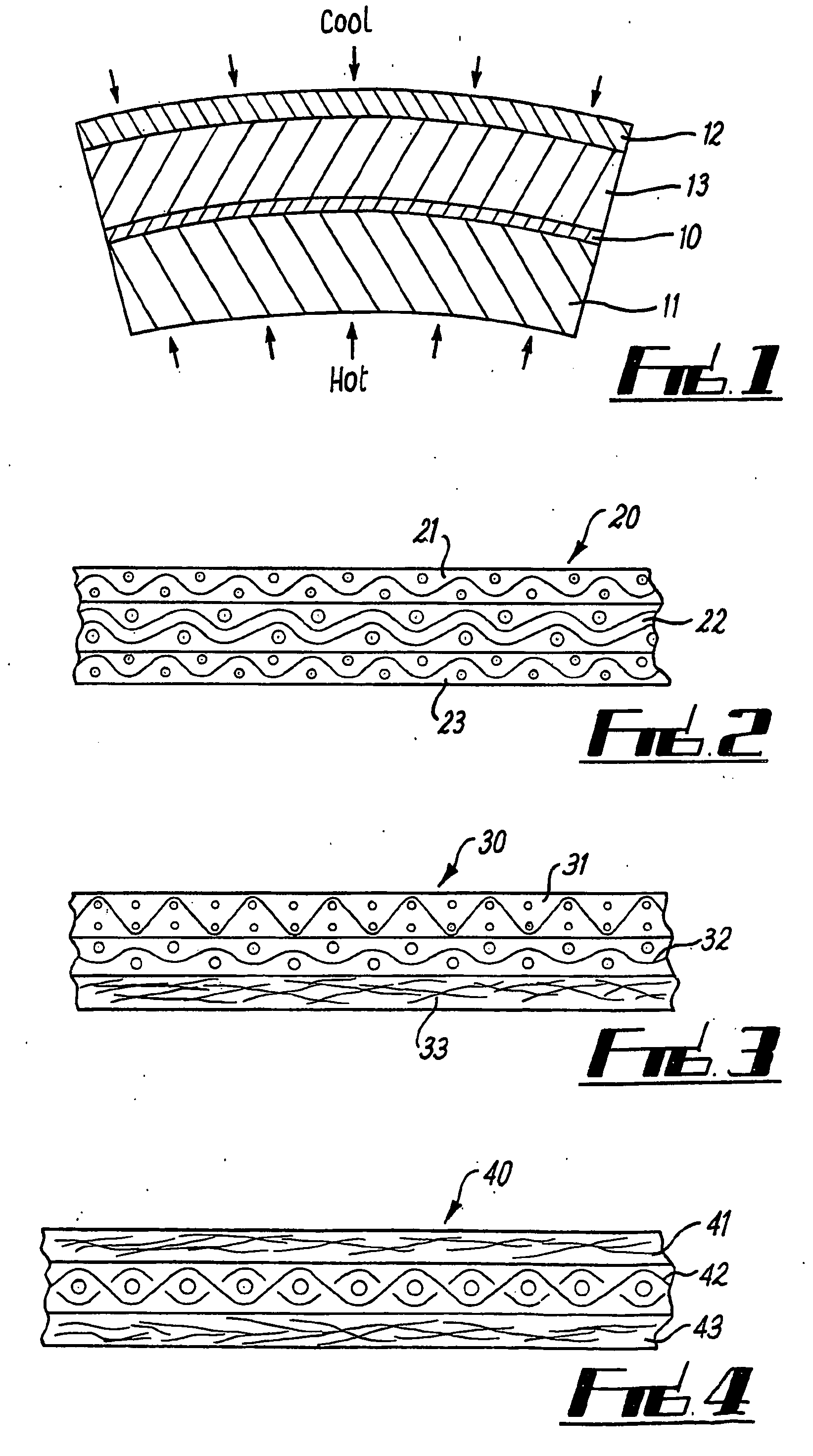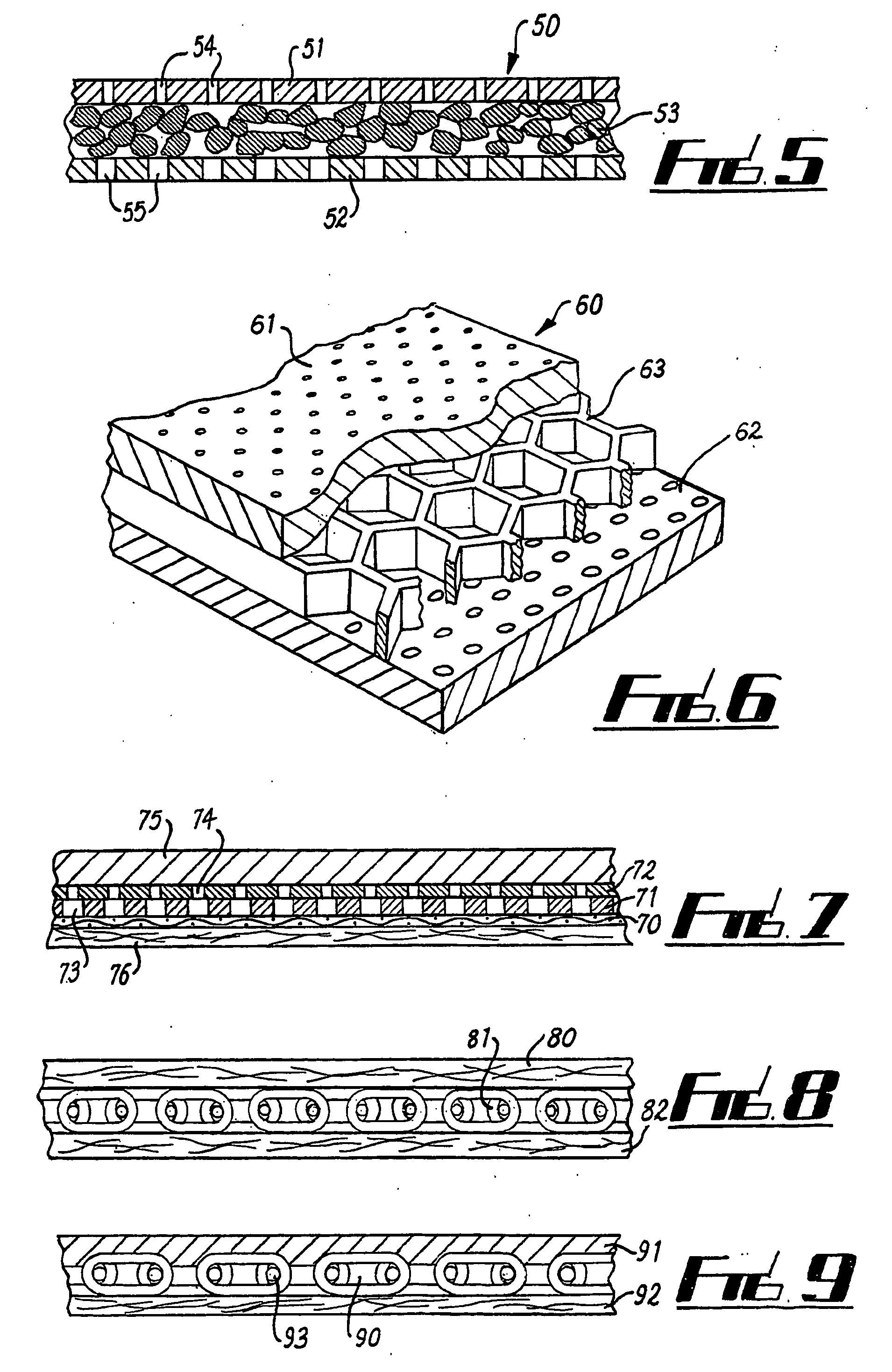Condensation dryer fabric
a dryer fabric and fabric technology, applied in the field of condensation dryer fabric, can solve the problems of inability to incorporate seams, inability to wet, fine and coarse fabrics, etc., and achieve the effect of low capillary force and large pores
- Summary
- Abstract
- Description
- Claims
- Application Information
AI Technical Summary
Benefits of technology
Problems solved by technology
Method used
Image
Examples
Embodiment Construction
[0050]FIG. 1 is a diagrammatic sectional view of a roll in a dynamic condensation drying apparatus. This is a magnified view of part of the shell of the roll with superposed dryer and carrier belts, with the curvature exaggerated. The outer wall of the roll comprises a shell or steel surface 11, which is heated from within the roll. A paper web 10 is passed over the roll in contact with the heated shell 11, with a drier fabric 13 pressing if thereon. The dryer fabric also serves to transport the paper web 10, and to absorb moisture driven from the web 10. Belt 12 is exposed to lower temperatures on its outer-side. This may be by contact with ambient air, forced ventilation, or actively refrigerated air, or more preferably a reservoir of cooled water, which is sealed by belt 12. The heated surface of cylinder 11 is between the range 120° C.-180° C., whilst the belt 12 is maintained in the range 20° C.-90° C., that is below boiling point so that condensation can take place.
[0051] In ...
PUM
| Property | Measurement | Unit |
|---|---|---|
| Temperature | aaaaa | aaaaa |
| Pore size | aaaaa | aaaaa |
| Diameter | aaaaa | aaaaa |
Abstract
Description
Claims
Application Information
 Login to View More
Login to View More - R&D
- Intellectual Property
- Life Sciences
- Materials
- Tech Scout
- Unparalleled Data Quality
- Higher Quality Content
- 60% Fewer Hallucinations
Browse by: Latest US Patents, China's latest patents, Technical Efficacy Thesaurus, Application Domain, Technology Topic, Popular Technical Reports.
© 2025 PatSnap. All rights reserved.Legal|Privacy policy|Modern Slavery Act Transparency Statement|Sitemap|About US| Contact US: help@patsnap.com



